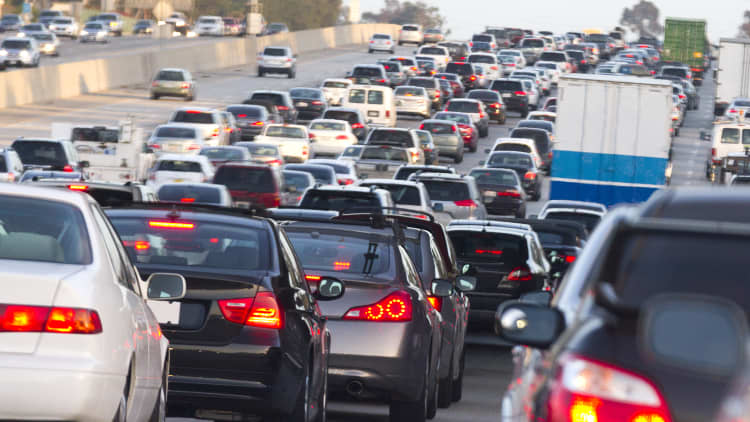Best known for its affordable automobiles, South Korean carmaker Hyundai Motor aims to take flight with Uber to develop a line of flying taxis for the Uber Elevate aerial ridehailing service.
A full-scale mock-up, dubbed the S-A1, is making its debut at the Consumer Electronics Show in Las Vegas this week. The electrically powered PAV, or "personal air vehicle," will have the capability of carrying up to four passengers on trips of up to 60 miles at speeds reaching 180 mph, the partners said Monday.

Uber Elevate has already signed up more traditional aerospace partners such as Embraer, Bell and Boeing subsidiary Aurora, but "Hyundai is our first vehicle partner with experience of manufacturing passenger cars on a global scale," Eric Allison, head of Uber Elevate, said in a statement. "We believe Hyundai has the potential to build Uber Air vehicles at rates unseen in the current aerospace industry, producing high quality, reliable aircraft at high volumes to drive down passenger costs per trip."

First unveiled in 2016, Uber Elevate aims to expand the ride-hailing giant's reach by linking urban centers and their suburbs, its air taxis expected to leapfrog traffic congestion by cruising at altitudes of around 1,000 to 2,000 feet. The company anticipates the roughly 50-mile trip from the Marina district near Uber headquarters in San Francisco to downtown San Jose, in the heart of Silicon Valley, would take about 15 minutes. The same trip can take more than 2 hours by car, depending upon traffic.
Uber Elevate is planning to begin demonstration flights this year. The ride-sharing giant hopes to launch commercial service in 2023, with operations initially set to debut in Dallas, Los Angeles and Melbourne, Australia.
For its part, Hyundai said its decision to develop the S-A1 is part of its broader goal of becoming a "smart mobility solution provider."
"Our vision of Urban Air Mobility will transform the concept of urban transportation," said Jaiwon Shin, executive vice president and head of Hyundai's Urban Air Mobility Division, or UAM. "We expect UAM to vitalize urban communities and provide more quality time to people. We are confident that Uber Elevate is the right partner to make this innovative product readily available to as many customers as possible."
Along with the full-size S-A1 mock-up, Hyundai is debuting several other concepts at this year's CES. That includes a "hub," the downsized equivalent of a flying taxi air terminal, as well as the PBV, or "purpose built vehicle" that could serve as an autonomous shuttle to carry passengers to and from Uber's Elevate bases.
The idea of using flying cars — or cabs — has been around for at least a century. Automotive pioneer Henry Ford hoped to develop an airworthy alternative to his Model T, running extensive testing on a craft dubbed "the flying flivver." But a crash that killed a test pilot led Ford to cancel the program.
Today, helicopter services operate out of many major metropolitan communities, often to connect airports and city centers. But those craft use complex powertrain systems that are extremely expensive to own and operate, limiting their application.

Uber Elevate envisions using electric propulsion, the different prototypes using multiple propellers, much like today's unmanned drones. Though more limited than helicopters in range, they are expected to be far less expensive to purchase and operate, Uber officials have said, potentially putting such a service within the reach of a much broader market.
The various partners Uber has come up with have presented a number of different designs, but they largely operate under the same basic concept. Like drones, they will be able to take off and land vertically, allowing them to operate in tight quarters where there would be no room for a landing strip. The Hyundai S-A1, in particular, has one key element in common with the military's Osprey aircraft. Once airborne, the flying cab will transition to operate more like a traditional aircraft, getting lift from its wings.
Neither Hyundai nor Uber is saying when they expect to see a version of the S-A1 ready for flight.
CORRECTION: This story was updated to correct the speed of the flights. It's 180 mph.

